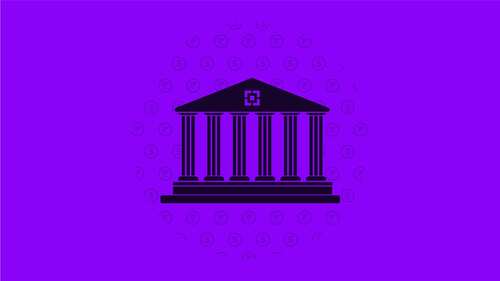Ashneer Grover, the most infamous shark of Shark Tank India, is your regular startup disruptor.
In just 4 years, he built BharatPe into a $2.85 billion company, and successfully raised a total of $680 million.
More importantly, BharatPe was a newcomer to the UPI payments market, directly competing with already established mammoths like PayTM, Google Pay and PhonePe. They quickly grew to process a total payment volume of $18.5B in Q1 of FY23 and have reached a loan book of INR 4500 crores in FY22.
But, behind these big shiny numbers, all is not well with BharatPe!
In FY22, BharatPe made revenue of INR 321 crores while it racked up a loss of INR 5594 crores (85% was due to an accounting standard)!
So, what's the reason behind BharatPe's numbers? And, more importantly, how does this fintech startup make money and run its business? Well, I cover everything in this quick article on BharatPe's business model.
A brief on BharatPe's founding journey
Back in 2018, the idea of BharatPe was conceived by early co-founders, 23-year-old Shashvat Nakrani and Bhavik Koladiya.
In contrast to the 23-year-old founder, Ashneer Grover had an illustrious career by that point. IIT Delhi and IIM Ahmedabad graduate, Grover had already worked at American Express bank, PC Jewellers and served as the CFO of Grofers.
The two young founders reached out to Gorver for angel investment. The latter then joined them as the 3rd founder. Soon enough, BharatPe's team was raising millions in funding in hopes of - in their own words - tackling a crucial problem.
But, what problem was that?
Putting interoperability in the UPI QR code business
Well, in the beginning, the young founders realised crucial pain points that all big and small merchants face in India:
Problem 1 ⇒ Lack of Funds
- You see, India has over 10 crore (100 million) merchants and only a small segment of these merchants are online.
- These merchants are usually under a cash crunch and have little access to on-the-go funds.
- They need access to immediate loans for expanding business, buying stocks, and getting extra working capital.
Problem 2 ⇒ Missing interoperability feature
- Before BharatPe, most QR codes that merchants used only accepted a certain payment app.
- So, if a local store has Paytm's QR code and a customer only has the Google Pay app, the transaction won't go through. In this case, the customer would have to pay via cash or card.
- Since the main feature of UPI was interoperability, this missing gap in the QR code business didn't make sense. This also went against the digitization goal.
- So, BharatPe introduced a single QR code for small businesses to accept several types of digital payments from different platforms. The QR codes were interoperable with ZERO MDR (merchant discount rate - rate charged to a person for payment processing). RBI later made zero MDR into a rule.
BharatPe decided to solve both of these problems. Soon enough, an army of BharatPe employees went to the streets to onboard merchants onto their payments app and install BharatPe's QR code in their shops
Later, the other payment apps followed suit and joined the interoperability bandwagon.
In just a short time of 1-2 years, BharatPe went from being a nobody to becoming one of the top payment apps in the country behind Google Pay and PhonePe. They onboarded 8 million merchants operating in 225 cities!
How does BharatPe make money? QR codes to POS machines
Phase 1 — QR codes
Although today, BharatPe has diversified quite a bit, in the early days its main model was around the QR code payments business. But, as mentioned in the previous section, BharatPe didn't charge any money for UPI transactions from merchants.
So, how did they recover all that cash spent on installing UPI QR codes? Well, they didn't.
They had to take a different route and get creative with their business model. Instead of adding commissions, they turned to lending — more specifically they introduced the equated daily instalments model and P2P lending in their system. Let me explain more!
Equated Daily Installments — The initial monetization idea was to lend money to merchants (solving problem 1 in the previous section). So, they introduced the equated daily instalments scheme where merchants are lent money, and they repay their dues through daily instalments taken out of their BharatPe account. This is the same money customers pay the merchant via the BharatPe QR code.
Phase 2 — POS machines
Since the QR code business was fairly new and also had low margins for BharatPe, they eventually entered the POS machines business. They created their own POS called BharatSwipe, which was approximately half the price of a regular machine in the market.
Soon enough, merchants were using BharatSwipe. But, what were the incentives BharatPe offered?
- Well firstly, since the POS business is well established and BharatPe was a new player, they practically gave away the machine for free.
- Next, they gave merchants 2 options:
- Either keep their POS transaction money with BharatPe for 15 days and pay ZERO commissions on transactions.
- Or, pay a commission of 2% for credit card transactions and 1% for debit.
Very few people decided to keep their money with BharatPe, as it would directly hamper a merchant's cash flow. So, BharatPe was left with the second option, where it barely made any money.
P2P Lending
Since, both the previous options were not lucrative, BharatPe, like many other fintech startups today turned to P2P lending.
P2P Lending — BharatPe supports peer-to-peer lending on its 12% Club platform. BharatPe has an existing network of merchants that are all onboarded on its platform. Given they already have an ecosystem, they essentially have one merchant lend money to another.
Now, BharatPe doesn't have an NBFC license, so it partners with external P2P lending firms to keep this operation churning. But, how does BharatPe make money here?
Well, the math is simple!
Say, a borrower merchant borrows money from the lender merchant at a ~24% interest rate. So, the split of the interest rate amount is:
12% ➝ Lender
12% ➝ BharatPe + P2P firm
A majority of BharatPe's loan book was made up of these P2P transactions.
Trouble: BharatPe's super-risky foundation
So, essentially BharatPe's business model is lending-dependent. Now, there are many problems with this model.
- The equated daily instalments model has a huge loophole. If consumers one day stop using BharatPe's QR code for transactions, then BharatPe won't be able to recover its money.
- The same is the case with POS machines. BharatPe depends on the 15-day period in which it holds onto the merchant's money. If the merchant switches to a different POS, it will hurt BharatPe.
Essentially, BharatPe's network and lending model both depend heavily on QR codes and POS machines, which merchants can easily switch.
So, the entire business model is built on a weak foundation.
On top of that, there are many issues with P2P lending. Although BharatPe claims that their non-performing assets (NPA) is very low (we don't have the exact number). According to a KEN article, during COVID, BharatPe's NPA went as high as 25%!
Plus the lenders on BharatPe's 12% Club platform have no visibility around the borrower profile. Since a big part of lending is risk analysis, it's not clear how BharatPe protects its lender community from defaults.
The 12% guaranteed interest rate return to lenders also goes against the RBI norm. RBI strictly prohibits P2P firms from interfering in the marketplace, so the promised returns go against that.
BharatPe also entered the consumer lending side of things with its platform, PostPe. This is essentially a buy now pay later product - again fraught with risk!
More shady stuff: Founders leaving, unaccounted finances, lawsuits and more!
Considering BharatPe's faulty business model, incredibly high expenses and dependence on lending to save the day, the company seems very much under the water.
Top it off with the cherry that is controversy, lawsuits, bungled finances, and things couldn't possibly get worse! Here are some of the top controversies surrounding the startup:
- The Ashneer Grover phone call screaming row with a Kotak employee.
- The controversy around funnelled funds, where Ashneer and his wife were accused of practices that would unethically enrich them with BharatPe funds. For example, practices like writing off a higher bill for merchandise products, routing incentives to senior executives and more.
- Ashneer Grover and his wife leaving BharatPe and top executive Sameer Suhail following suit.
- Original co-founder Bhavik Koladiya suing Grover and a lot more!
Given BharatPe's many problems, pulling out of the company of controversy and losses is obviously a tough task. But, the new management taking Grover's place is doing just that.
Recently, they have shut down cash backs, and closed merchant partnerships. They have also closed new investments in the 12% Club. With the closure of many of its risky models, BharaPe is also looking to venture into more traditionally safe businesses.
Given BharatPe's $2.85B valuation, there is a lot of shareholder money and "interest" at stake. And, with chaos brewing, it's really up to the fintech gods to save BharatPe's future.
.jpg)






